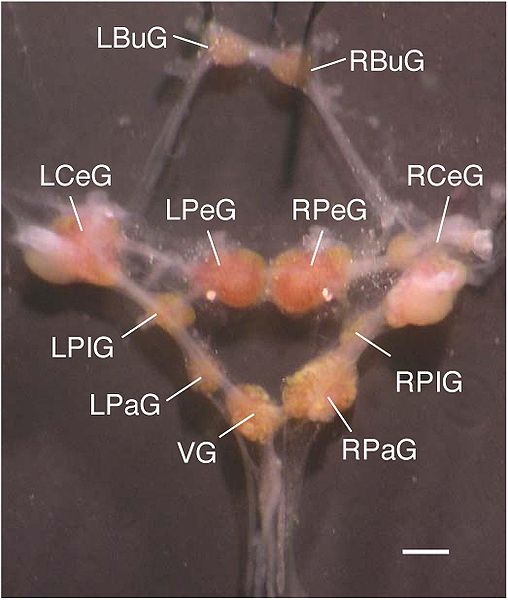Lymnaea stagnalis, better known as the great pond snail, is a species of large air-breathing freshwater snail, an aquatic pulmonate gastropod mollusk in the family Lymnaeidae. The great pond snail is a model organism to study parasitology, neurology, embryonal development and genetic regulation.
Lymnaea stagnalis
Typical shell
Great pond snail with an adult Physa sp. snail
The dissected central ring ganglia of Lymnaea stagnalis. Scale bar is 1 mm. LBuG and RBuG: left and right buccal ganglia LCeG and RCeG: left and right cerebral ganglia LPeG and RPeG: left and right pedal ganglia LPIG and RPIG: left and right pleural ganglia LPaG and RPaG: left and right parietal ganglia VG: visceral ganglion.
Freshwater snails are gastropod mollusks that live in fresh water. There are many different families. They are found throughout the world in various habitats, ranging from ephemeral pools to the largest lakes, and from small seeps and springs to major rivers. The great majority of freshwater gastropods have a shell, with very few exceptions. Some groups of snails that live in freshwater respire using gills, whereas other groups need to reach the surface to breathe air. In addition, some are amphibious and have both gills and a lung. Most feed on algae, but many are detritivores and some are filter feeders.
Bithynia tentaculata, a small freshwater gastropod in the family Bithyniidae
Pomacea insularum, an apple snail
Planorbella trivolvis, an air-breathing ramshorn snail
Family Neritidae, Neritina natalensis








